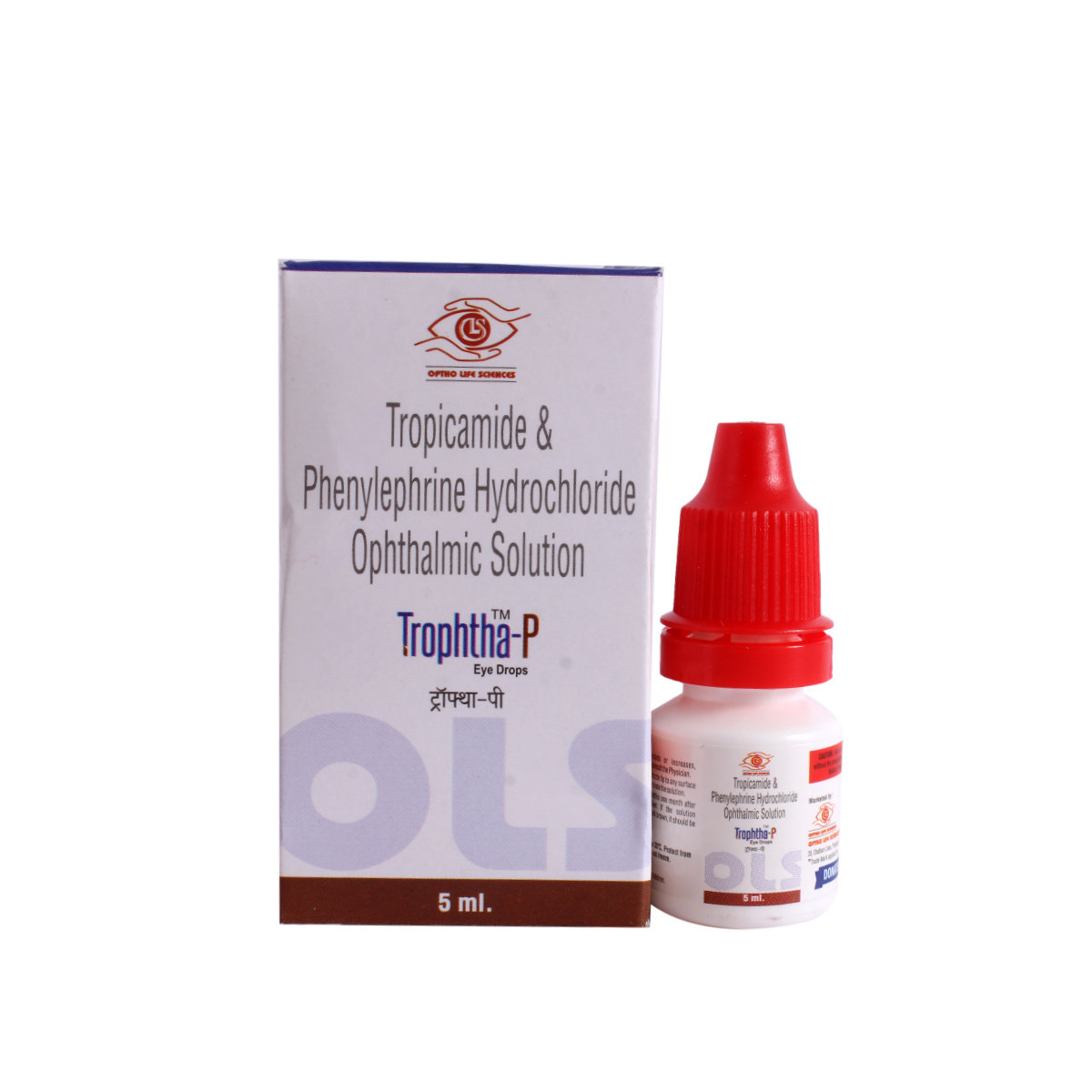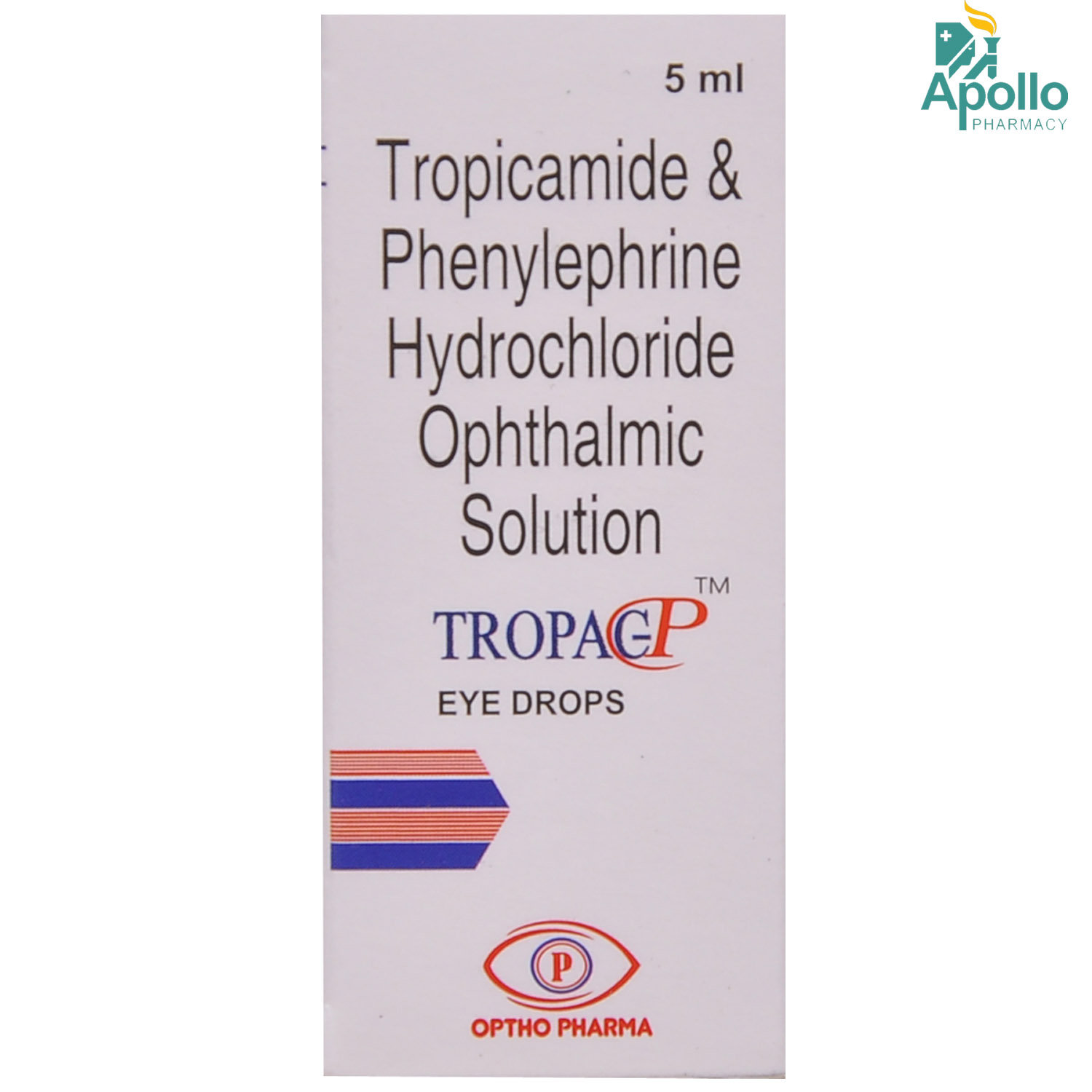Itrop Plus Eye Drops 5 ml
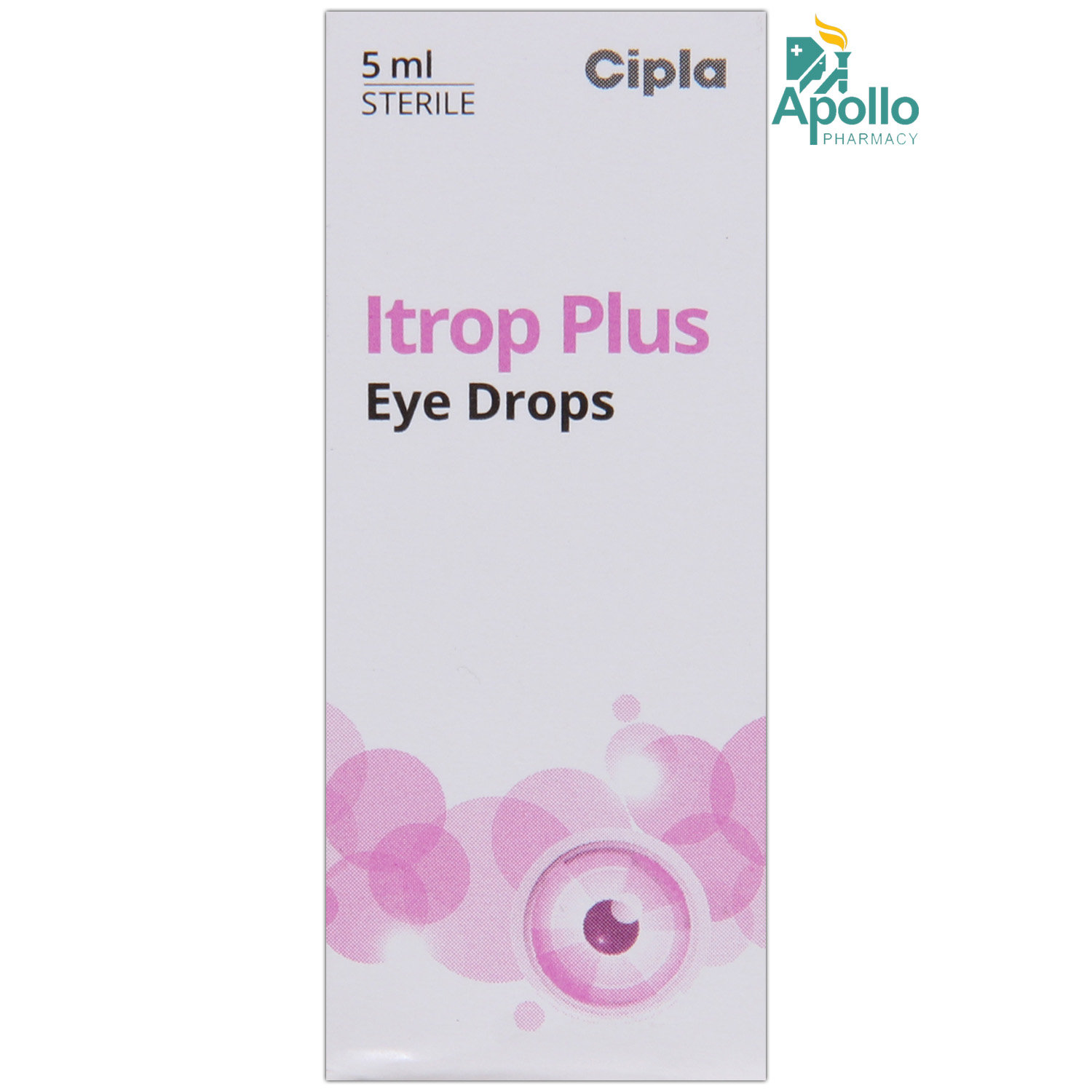
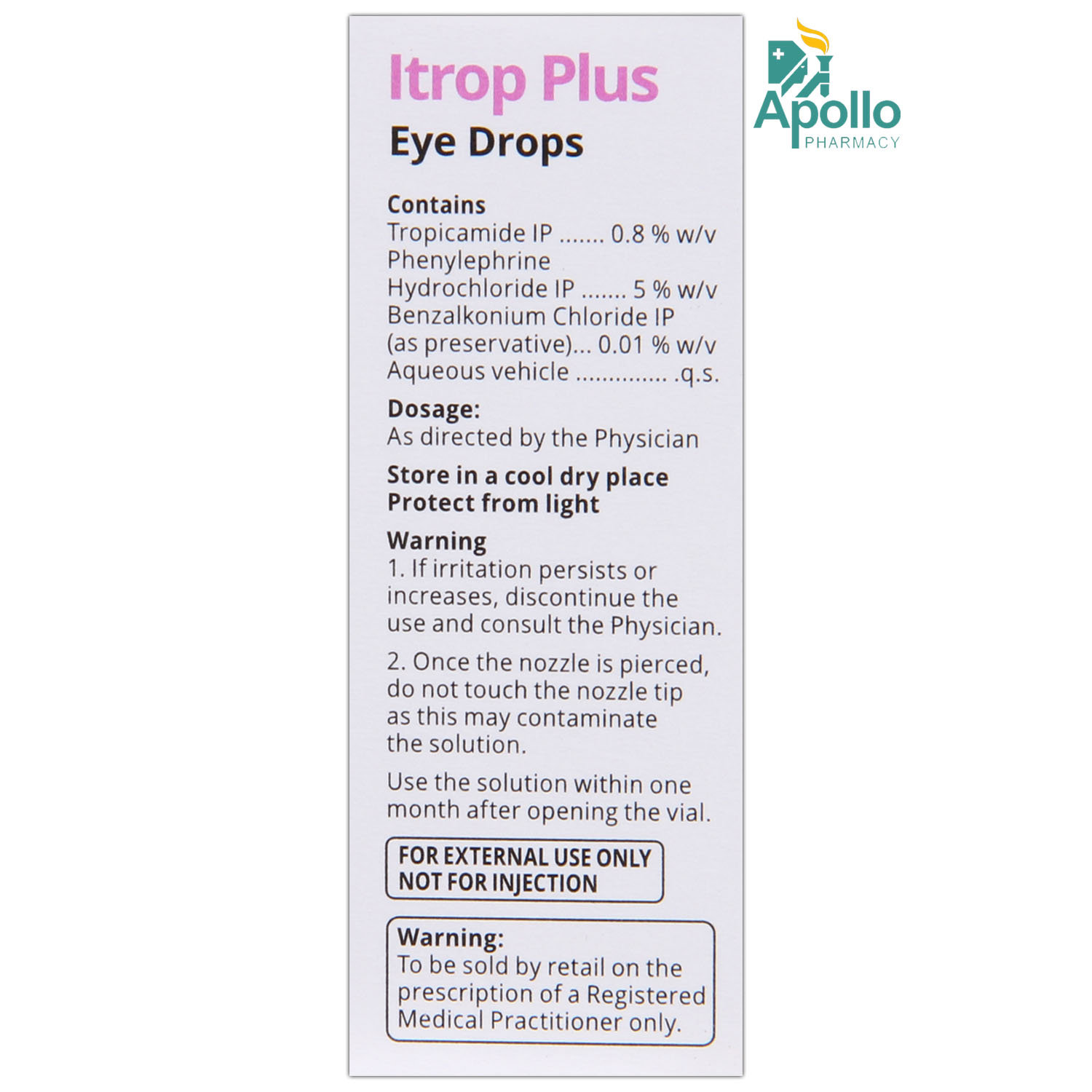
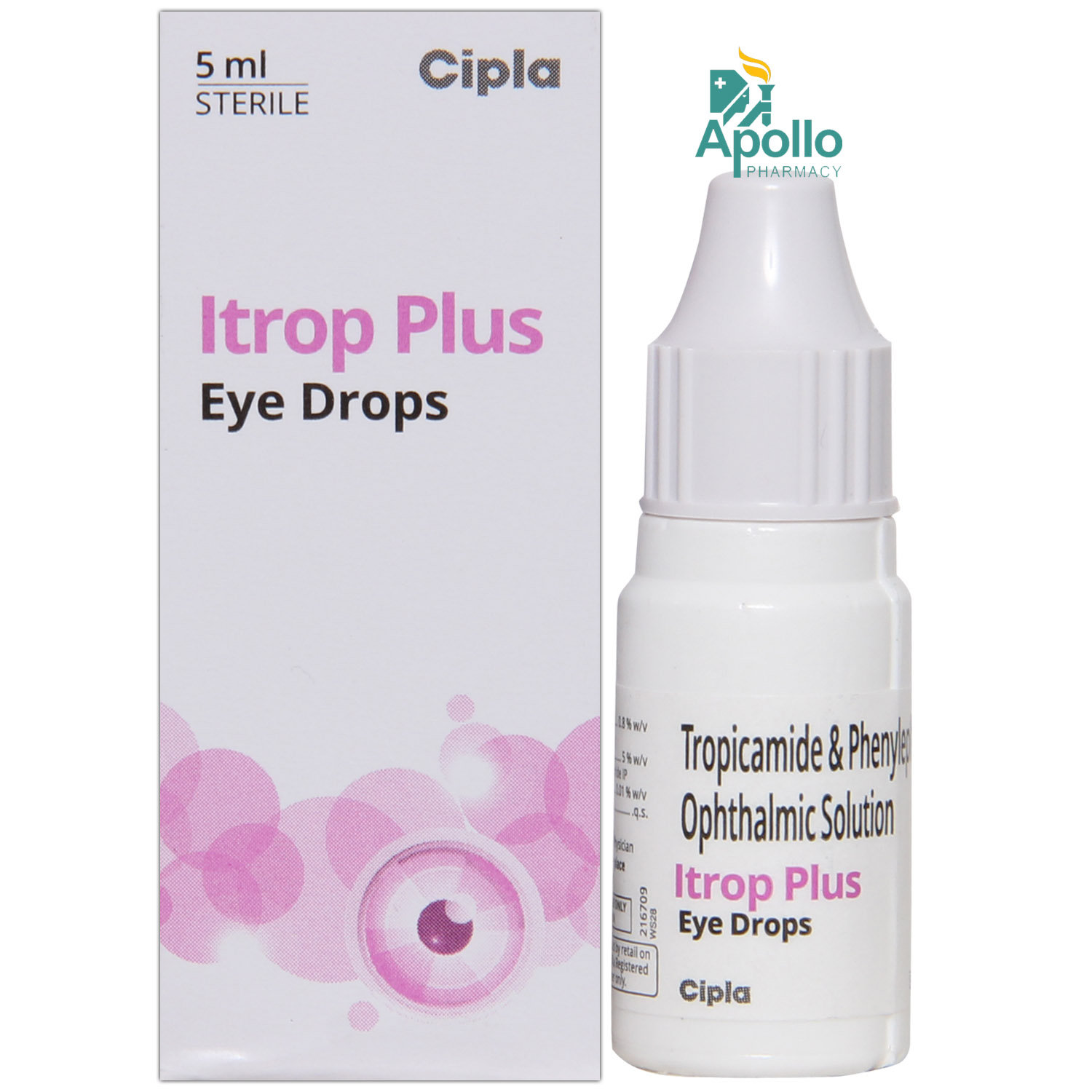
MRP ₹102.5
(Inclusive of all Taxes)
₹15.4 Cashback (15%)
know your delivery time
Provide Delivery Location
Composition :
Manufacturer/Marketer :
Consume Type :
Expires on or after :
Return Policy :

Secure Payment

Trusted by 8 Crore Indians

Genuine Products
Therapeutic Class
Country of origin
Manufacturer/Marketer address
Disclaimer
Alcohol
Safe if prescribed
Alcohol may interfere with the action of Itrop Plus Eye Drops 5 ml. Hence please limit/avoid taking alcohol while being treated with Itrop Plus Eye Drops 5 ml.
Pregnancy
Consult your doctor
When clinically needed, Itrop Plus Eye Drops 5 ml is given by a doctor to pregnant women after doing a risk/benefit assessment. Please consult your doctor before using Itrop Plus Eye Drops 5 ml if you are pregnant or planning to conceive.
Breast Feeding
Consult your doctor
Please consult your doctor before using Itrop Plus Eye Drops 5 ml if you are breastfeeding.
Driving
Safe if prescribed
Itrop Plus Eye Drops 5 ml may cause blurred vision. So, avoid driving or operating heavy machinery until your vision is clear.
Liver
Consult your doctor
Itrop Plus Eye Drops 5 ml can be given safely to patients with liver diseases when prescribed.
Kidney
Consult your doctor
Itrop Plus Eye Drops 5 ml can be given safely to patients with kidney diseases when prescribed.
Children
Safe if prescribed
Itrop Plus Eye Drops 5 ml should be used with caution in children with heart and neurological diseases. It is not recommended for use in children less than 1 year of age.
Product Substitutes
About Itrop Plus Eye Drops 5 ml
Itrop Plus Eye Drops 5 ml belongs to the class of medications called ‘Ophthalmic agents’ used for examining the eye during the diagnosis or detection of any eye disease, or therapeutic procedures. It can help detect eye inflammation or any other eye diseases such as uveitis (inflammation of the middle layer of the eyewall) or in ophthalmoscopy procedures (retinal examination) or during eye surgeries.
Itrop Plus Eye Drops 5 ml is a combination of two medicines: Tropicamide and Phenylephrine. Tropicamide is an anticholinergic, while Phenylephrine is a decongestant. They work by making the pupil of your eye larger and relaxing the muscles in your eye. This allows proper examination of the inside of your eye.
Itrop Plus Eye Drops 5 ml is for external use only. You should take this medicine as prescribed by your doctor. The common side-effects of Itrop Plus Eye Drops 5 ml are headache, dizziness, blurred vision, photophobia (sensitivity to light), eye pain, eye irritation, burning or stinging sensation in the eye, skin rash, hypotension (low blood pressure) and nausea (feeling sick). Inform your doctor if any of these side-effects persist or get worsen.
Do not take Itrop Plus Eye Drops 5 ml if you are allergic to Tropicamide, Phenylephrine or any contents of it. Before taking Itrop Plus Eye Drops 5 ml, inform your doctor if you have glaucoma (increased pressure in the eye), heart diseases, hypertension (high blood pressure), hormonal disorders, thyroid problems, diabetes and tachycardia (increased heart rate). Inform your doctor if you are pregnant or breastfeeding before starting Itrop Plus Eye Drops 5 ml. It should not be used in children below 1 year.
Uses of Itrop Plus Eye Drops 5 ml
Medicinal Benefits Mweb
Key Benefits
Itrop Plus Eye Drops 5 ml is a combination of two medicines: Tropicamide and Phenylephrine. Tropicamide is an anticholinergic, while Phenylephrine is a decongestant. They work by making the pupil of your eye larger and relaxing the muscles in your eye. This allows proper examination of the inside of your eye.
Directions for Use
Side Effects of Itrop Plus Eye Drops 5 ml
- Headache
- Dizziness
- Blurred vision
- Photophobia (sensitivity to light)
- Eye pain
- Eye irritation
- Burning or stinging sensation in the eye
- Skin rash
- Hypotension (low blood pressure)
- Nausea (feeling sick)
Drug Warnings
Itrop Plus Eye Drops 5 ml may increase pressure inside the eye, so it should not be used in patients with glaucoma. It is advised to remove contact lenses at least 15 minutes before instilling Itrop Plus Eye Drops 5 ml drops as it may eye irritation. Itrop Plus Eye Drops 5 ml should be used with caution in patients with eye inflammation. Itrop Plus Eye Drops 5 ml is also used with extreme caution in children, especially with Down syndrome and brain damage as there is an increased risk of side-effects associated with the nervous system.
Drug-Drug Interactions
Drug-Drug Interactions
Login/Sign Up
Taking Itrop Plus Eye Drops 5 ml with Propofol may lead to increased levels of Itrop Plus Eye Drops 5 ml leading to side effects like high blood pressure.
How to manage the interaction:
Taking Itrop Plus Eye Drops 5 ml with Propofol is not recommended, but it can be taken if prescribed by the doctor. Do not discontinue the medications without consulting a doctor.
Taking Furazolidone with Itrop Plus Eye Drops 5 ml can cause an increase in high blood pressure.
How to manage the interaction:
Taking Furazolidone with Itrop Plus Eye Drops 5 ml is not recommended, it can be taken if prescribed by the doctor. However, if you experience sudden and severe headache, blurred vision, confusion, seizures, chest pain, nausea or vomiting, sweating, lightheadedness, fainting, sudden numbness or weakness (especially on one side of the body), speech difficulties, fever, consult the doctor immediately. It is advised to use Itrop Plus Eye Drops 5 ml only after 14 days of stopping Furazolidone.
Co-administration of Itrop Plus Eye Drops 5 ml with Sevoflurane can increase the levels of Itrop Plus Eye Drops 5 ml and lead to side effects.
How to manage the interaction:
Taking Itrop Plus Eye Drops 5 ml with Sevoflurane is not recommended, it can be taken if prescribed by the doctor. Do not discontinue the medications without consulting a doctor.
Taking Tranylcypromine with Itrop Plus Eye Drops 5 ml can increase the risk of high blood pressure.
How to manage the interaction:
Taking Tranylcypromine with Itrop Plus Eye Drops 5 ml is not recommended, but can be taken together if prescribed by a doctor. However, consult a doctor if you experience severe headache, blurred vision, confusion, seizures, chest pain, nausea or vomiting, sudden numbness or weakness (especially on one side of the body), speech difficulties, fever, sweating, lightheadedness, and fainting Do not discontinue any medications without consulting a doctor.
Co-administration of Selegiline with Itrop Plus Eye Drops 5 ml together can raise blood pressure.
How to manage the interaction:
Taking Selegiline with Itrop Plus Eye Drops 5 ml is not recommended, it can be taken together if prescribed by a doctor. However, consult a doctor immediately if you experience any symptoms such as severe headache, blurred vision, confusion, fits, chest pain, nausea or vomiting, sudden numbness or weakness (especially on one side of the body), speech difficulties, fever, sweating, lightheadedness, and/or fainting Do not discontinue any medications without consulting a doctor.
Co-administration of Topiramate can cause increased body temperature and decreased sweating, and these effects may be worsened when combined with medications like Itrop Plus Eye Drops 5 ml.
How to manage the interaction:
Although there is a possible interaction between Itrop Plus Eye Drops 5 ml and Topiramate, you can take these medicines together if prescribed by your doctor. However, if you experience any unusual symptoms, consult the doctor. Do not discontinue any medications without consulting a doctor.
Co-administration of Itrop Plus Eye Drops 5 ml with Halothane may increase the risk of an irregular heart rhythm.
How to manage the interaction:
Although taking Itrop Plus Eye Drops 5 ml with Halothane together can result in an interaction, it can be taken if a doctor has prescribed it. However, if you experience any symptoms like lightheadedness, fainting, irregular heart beat, dizziness, consult the doctor. Do not discontinue any medications without a doctor's advice.
Co-administration of Nortriptyline with Itrop Plus Eye Drops 5 ml may lead to side effects like increased blood pressure.
How to manage the interaction:
Although taking Nortriptyline and Itrop Plus Eye Drops 5 ml together can result in an interaction, it can be taken if a doctor has prescribed it. Regular monitoring of blood pressure is advised. Do not discontinue any medications without a doctor's advice.
Co-administration of Amoxapine and Itrop Plus Eye Drops 5 ml together may lead to side effects like increased blood pressure.
How to manage the interaction:
Taking Itrop Plus Eye Drops 5 ml and Amoxapine together can result in an interaction, it can be taken if a doctor has advised it. However, if you experience any unusual symptoms, consult the doctor. It is advised to maintain blood pressure. Do not discontinue any medications without a doctor's advice.
Co-administration of Itrop Plus Eye Drops 5 ml with Phenelzine can result in extremely high blood pressure which may be serious.
How to manage the interaction:
There may be a possibility of interaction between Itrop Plus Eye Drops 5 ml and Phenelzine, but it can be taken if prescribed by a doctor. However, If you develop a sudden, severe headache, blurred vision, confusion, chest pain, nausea, vomiting, sudden numbness or weakness (particularly on one side of the body), difficulty speaking, fever, sweating, lightheadedness, or fainting, consult a doctor immediately. Do not stop using any medications without a doctor's advice.
Drug-Food Interactions
Drug-Food Interactions
Login/Sign Up
Drug-Diseases Interactions
Drug-Diseases Interactions
Login/Sign Up
Drug-Drug Interactions Checker List
- ATROPINE
- ISOCARBOXAZID
- LINEZOLID
- SELEGILINE
- RASAGILINE
- PHENELZINE
- TRANYLCYPROMINE
- QUINIDINE
- HALOTHANE
Habit Forming
Special Advise
Your doctor may advice an eye examination to check for glaucoma before giving Itrop Plus Eye Drops 5 ml in patients with history of glaucoma or family history of glaucoma.
Diet & Lifestyle Advise
- Sleep for at least six to eight hours to rejuvenate your eyes naturally.
- Wash your eyes with clean water at least two to three times a day
- Manage stress, eat healthily, drink plenty of water, exercise regularly and get plenty of sleep.
- Avoid alcoholic beverages as it can make you dehydrated and affect your sleep. This effect can also affect your body’s ability in fighting off infections.
- Reduce screen time (by avoiding watching tv, or phone) and use sunglasses while going out into the sunlight.
All Substitutes & Brand Comparisons
RX
Tro Plus Eye Drops 5ml
Nri Vision Care India Ltd
₹56
(₹10.08/ 1ml)
45% CHEAPERRX
Out of StockAppamide Plus Eye Drop
Appasamy Ocular Devices Pvt Ltd
₹65.34
(₹11.76/ 1ml)
36% CHEAPERRX
Optimide Plus Eye Drops 5 ml
Micro Labs Ltd
₹67.5
(₹12.16/ 1ml)
34% CHEAPER

Have a query?
Buy best Ocular products by
Entod Pharmaceuticals Ltd
Ajanta Pharma Ltd
Sunways (India) Pvt Ltd
Sun Pharmaceutical Industries Ltd
Cipla Ltd
Micro Labs Ltd
Allergan Healthcare India Pvt Ltd
Intas Pharmaceuticals Ltd
Raymed Pharmaceuticals Ltd
Nri Vision Care India Ltd
FDC Ltd
Jawa Pharmaceuticals India Pvt Ltd
Indoco Remedies Ltd
Sapient Laboratories Pvt Ltd
Senses Pharmaceuticals Pvt Ltd
Centaur Pharmaceuticals Pvt Ltd
Neomedix Healthcare India Pvt Ltd
Aromed Pharmaceuticals
Optho Remedies Pvt Ltd
Aurolab
Austrak Pvt Ltd
Lupin Ltd
Mankind Pharma Pvt Ltd
Zivira Labs Pvt Ltd
Optho Pharma Pvt Ltd
Synovia Life Sciences Pvt Ltd
Akumentis Healthcare Ltd
Eyekare
His Eyeness Ophthalmics Pvt Ltd
Protech Remedies Pvt Ltd
Runyon Pharmaceutical Pvt Ltd
Alcon Laboratories Inc
Syntho Pharmaceuticals Pvt Ltd
Alembic Pharmaceuticals Ltd
Bell Pharma Pvt Ltd
Klar Sehen Pvt Ltd
Sentiss Pharma Pvt Ltd
Irx Pharmaceuticals Pvt Ltd
Optho Life Sciences Pvt Ltd
Phoenix Remedies Pvt Ltd
Alkem Laboratories Ltd
Doctor Wonder Pvt Ltd
Hicare Pharma
Ipca Laboratories Ltd
Neon Laboratories Ltd
Okulus Drugs India
Pharmtak Ophthalmics (I) Pvt Ltd
Berry & Herbs Pharma Pvt Ltd
Glow Vision Pharmaceuticals
Kaizen Drugs Pvt Ltd
Choroid Laboratories Pvt Ltd
Indiana Opthalamics Pvt Ltd
Optica Pharmaceutical Pvt Ltd
Pharmatak Opthalmics India Pvt Ltd
Samarth Life Sciences Pvt Ltd
Vibgyor Vision Care
Mofon Drugs
Novartis India Ltd
Pharmia Biogenesis Pvt Ltd
Zydus Cadila
Appasamy Ocular Devices Pvt Ltd
Leeford Healthcare Ltd
Medivision Pharma Pvt Ltd
Orbit Life Science Pvt Ltd
X-Med Royal Pharma Pvt Ltd
Zee Laboratories Ltd
Aarma Laboratories
Guerison MS Inc
Laborate Pharmaceuticals India Ltd
Xtas Pharmaceuticals
Accurex Biomedical Pvt Ltd
Blucrab Pharma Pvt Ltd
Does Health Systems Pvt Ltd
Flagship Biotech International Pvt Ltd
Lavue Pharmaceuticals Pvt Ltd
Nutrilis Healthcare Pvt Ltd
Ursa Pharm India Pvt Ltd
Vee Remedies
Vyonics Health Care India Pvt Ltd
Warren Pharmaceuticals Pvt Ltd
Abbott India Ltd
Accvus Pharmaceuticals
Akums Drugs & Pharmaceuticals Ltd
Cadila Healthcare Ltd
Carevision Pharmaceuticals Pvt Ltd
Dey's Medical Stores (Mfg) Ltd
East West Pharma India Pvt Ltd
Eyedea Pharmaceuticals Pvt Ltd
Nimbus Healthcare Pvt Ltd
Ocuris Pharmaceuticals Pvt Ltd
Sherings Pharmaceuticals
Tarks Pharmaceuticals Pvt Ltd
Vcan Biotech
Vision Medilink
Aice Health Care Pvt Ltd
Appasamy Pharmaceuticals Pvt Ltd
Asperia Lifescience Pvt Ltd
Beatum Healthcare Pvt Ltd
East India Pharmaceutical Works Ltd
Grevis Pharmaceutical Pvt Ltd







